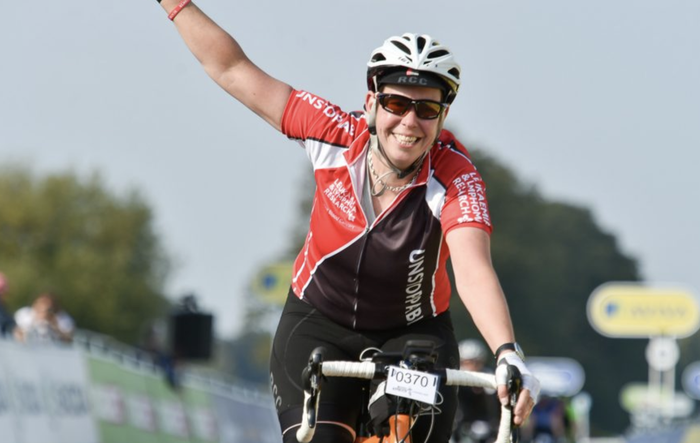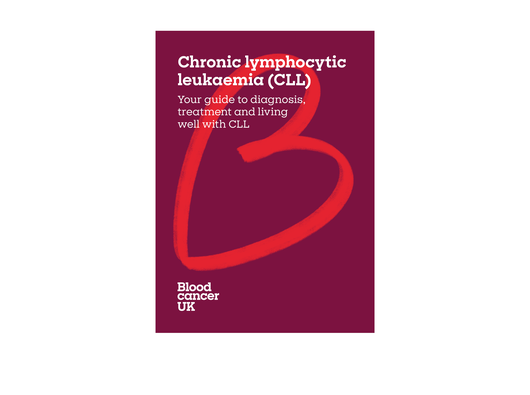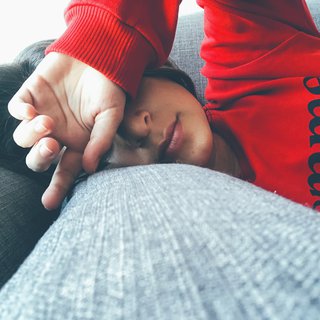Sarah's story
Cycling kept me on track during watch and wait
Sarah, 47, was diagnosed with chronic lymphocytic leukaemia (CLL) in 2011. She was put on watch and wait – having regular check-ups so the progression could be closely monitored until treatment was necessary.

Sarah, 47, was diagnosed with chronic lymphocytic leukaemia (CLL) in 2011. She was put on watch and wait – having regular check-ups so the progression could be closely monitored until treatment was necessary.
Being told I had a life-threatening illness shocked me very deeply. It’s hard to reconcile the fact that, having found the cause of the problem, it’s not going to be treated immediately. That you’re not going to be instantly fixed. That essentially nothing can be done, despite the fact you’ve just been told you have an incurable disease.
I realised it was up to me to look after my health and do whatever I could to keep the rest of me healthy. I didn’t need to make drastic changes, but I did make every effort to live as healthily as I could.
It was all about taking positive steps. Making the effort to take care of myself had a positive effect on my outlook, which I believed would, in turn, help to keep me well.
Finding inspiration
Before my diagnosis, I did no exercise whatsoever. I was working as a sound engineer in the theatre and my job was physically active enough to keep me fairly fit. I never consciously exercised and hadn’t taken part in any sporting events since my early twenties.
In the months after my CLL diagnosis, when I was coming to terms with my illness, I saw a poster for the Blood Cancer UK London Bikeathon. It stopped me in my tracks. I hadn’t ridden a bike for many, many years – not since I was a teenager – but I instantly wanted to take part in the event.
I had a look at the website to find out more and told a few friends about it. Before I knew it, a group of about 20 of us had signed up. My family, friends and partner really got behind it and I felt extremely lucky to have such support.
I bought a bike and started training. Initially this consisted of Sunday rides with a couple of friends, mostly on flat, easy ground such as the Regent’s Canal path and local cycle path routes in South East London.
This was a great introduction to cycling and a way of building up my strength. We managed to get a few evenings after work in too and it wasn’t long before we decided to do the 26-mile Bikeathon route rather than the 13.
When the day came, the sun was shining and the overall turnout was amazing. The Bikeathon route was nice and flat so we could take it at our own pace. It was such a fun event, and it gave me a huge boost knowing the money we raised would have a positive impact on other blood cancer patients. And that is precisely the moment I got hooked on cycling.
Falling in love with cycling
The following year, four friends and I entered the first London Revolution ride – a two-day event, cycling the 180-mile circumference of London – in aid of Blood Cancer UK. It was a long, hard slog but we made it and raised a lot of money for the charity.
I vowed then to keep cycling to fundraise. I would train for specific rides on an annual basis and try to ride to work (about eight miles) every day. A couple of friends and I would try and ride every Sunday and slowly build up our distances. We’d ride out from south London to Box Hill, Richmond Park and once we even got as far as Brighton!
I was slightly apprehensive at first about taking on these distances just because I had no idea how my body would react. Everything about CLL and watch and wait (active monitoring) was new to me. Sometimes, it was hard to gauge whether I was suffering from training tiredness or illness-related fatigue.
Although I was consistently a little slower than my friends up the hills, my fitness developed at the same rate as theirs. The benefits I was experiencing massively outweighed any tiredness. I learnt the importance of drinking enough fluids while on the bike and the importance of good nutrition before, during and after riding.
I began to have to do more training by myself. This was daunting initially, but with the goal of fundraising for Blood Cancer UK in my sights, motivation overcame anxiety.
Keeping going
By 2014, I was visibly losing weight. That was alarming, but I still managed to take part in all the rides I’d signed up for. The Prudential Ride London and the Bikeathon became particularly precious to me. They gave me something to focus on and to aim for – and of course to look forward to.
At my lowest moments, I would sometimes fear that I wouldn’t be around for the following year’s event. But feeling a responsibility to the people sponsoring me and having a challenge to complete would keep those thoughts at bay and help me focus on cycling.
Reaping the benefits
Over the watch-and-wait years, the positive effects cycling had on me, mentally, were immeasurable. It was hard work physically, but as long as I could ride my bike I was OK mentally.
The good thing about cycling is that you can go at your own pace, so even if I was feeling tired or a bit weak I could just pedal at whatever pace I wanted, and still reap the benefits.
Taking up cycling really changed my life and is the silver lining to what was a rubbish situation. The positive effects on my attitude to my illness, and now to my health in general as someone in remission, are enormous.
Your guide to CLL
This free booklet covers:
- finding out you have CLL
- understanding CLL
- coping with watch and wait
- treatment options
- living well with CLL
- real stories of people living with CLL
You can order it for free from our online shop.

Janssen-Cilag Ltd has supported Blood Cancer UK with funding for the production of this web page and others within the ‘Living well’ section. It had no influence over the content.

